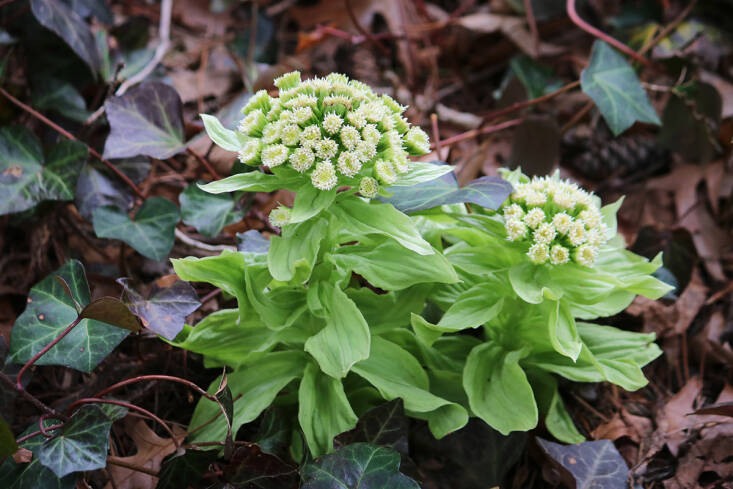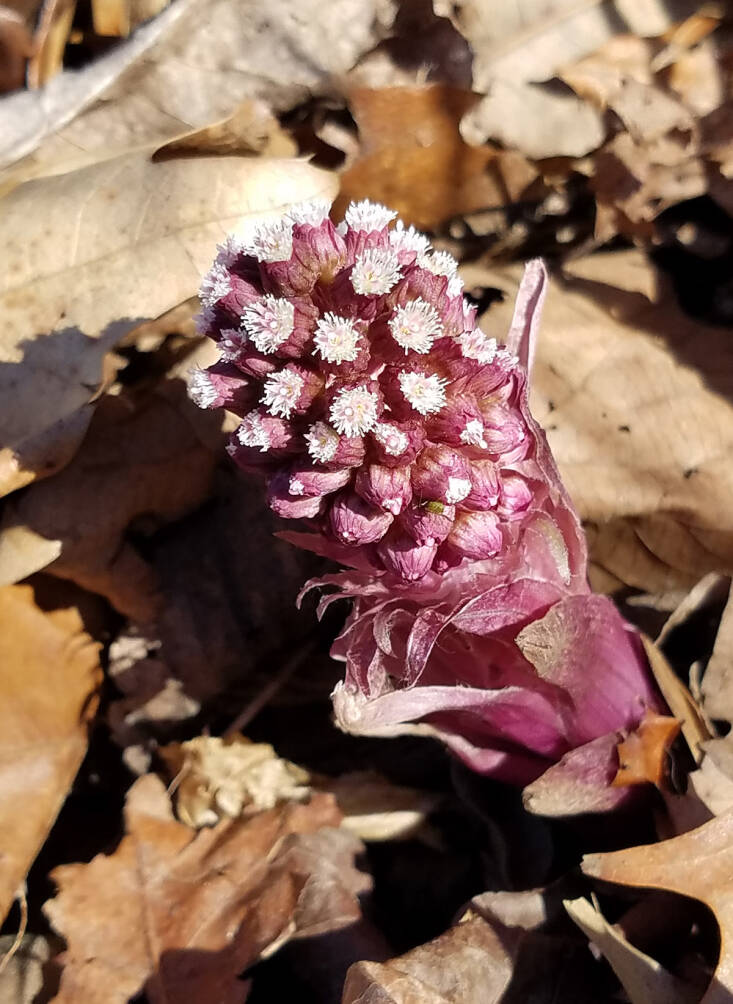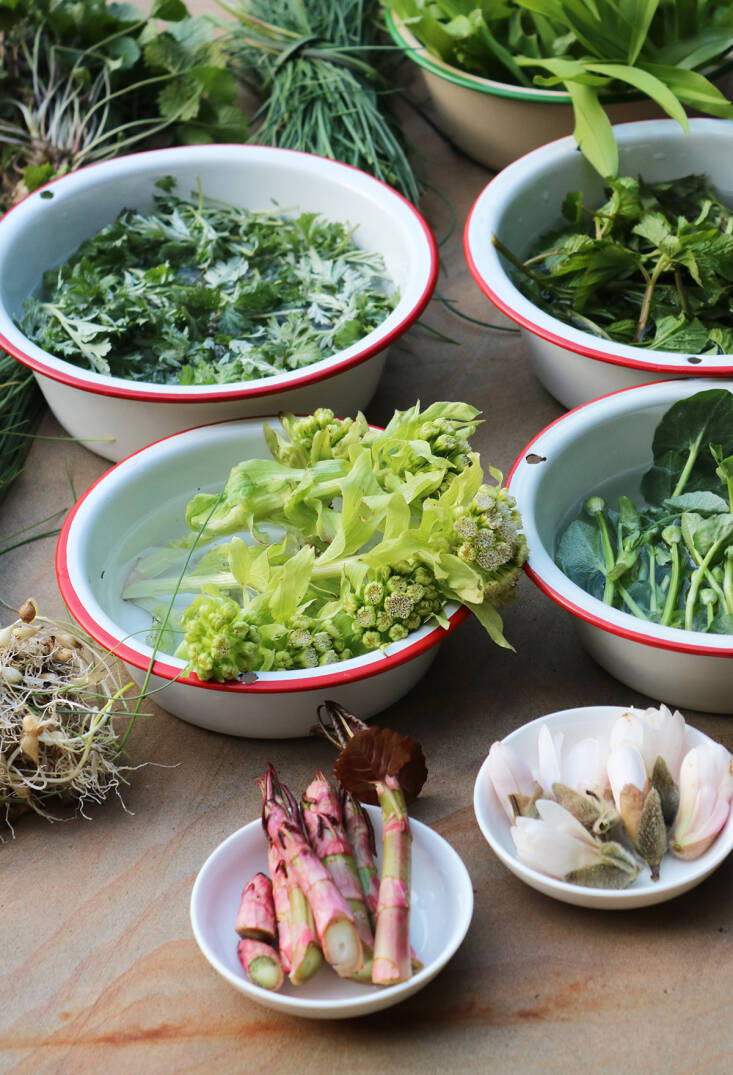Butterburs Herald the Coming of Spring
Fuki is the (transliterated) Japanese name for the perennial plant butterbur. In Japan, fuki no to, the aromatic buds of butterbur, are a delicacy and a herald of spring, which is still weeks away when they emerge from the cold ground. Butterburs belong to the genus Petasites, and North America is home to a cold-hardy native species as well as introduced butterburs, which are valued as ornamentals in gardens. Their parasol-wide leaves are awe-inspiring, as they broaden in summer. The midribs of fuki leaves are also eaten in Japan, and were a traditional food for Native Americans. All edible parts of the plant are specially treated before consumption. Fuki comes with caveats.
Celebrate winter’s demise with a bite of fuki tempura or miso, and learn more about this plant-of-many-names.
Photography by Marie Viljoen.

Fuki, butterbur, sweet coltsfoot, Arctic coltsfoot, Arctic butterbur, pestilence wort. These common names are used close to interchangeably, depending on the person, place, species, and variety of Petasites. Japanese butterbur is Petasites japonicus, and its chartreuse-shaded buds break ground many weeks before the vernal equinox in the Northeast, where it is mildly invasive. Its buds appear when cornelian cherry, hellebores, fragrant honeysuckle, and witch hazel bloom. It is native to East Asia and is hardy from USDA zones 5-9. While Japanese butterbur is known as a good plant for problem places, this has led unintentionally to some environmental issues: Petasites in general can be aggressive colonizers and have a high tolerance for moist spots. Butterburs spread via creeping rhizomes, and their wide, leafy canopies create a super-shade where other plants cannot grow.
[galley_caption]Above: Artist Justice Wolf of Little Creek Ink, standing beneath mature fuki leaves.[/galley_caption]
The densely budded but diminutive flower buds of Japanese butterbur give way to leaves that are otherworldly in scale, like a botanical throwback to dinosaur times. A mature plant can stand over six feet tall, with foliage that instantly shrinks the human standing beneath the statuesque stems.

A burgundy-flowered butterbur, Petasites hybridus, is native to Europe and parts of Asia. It enjoys a common name (among many others) that inadvertently captures two sides of a botanical argument: Pestilence wort. You could read that as referring to an environmental threat, or to its extensive use as a folk medicine. (It has been studied in the treatment of migraines.) Of these two species, Japanese butterbur is considered more problematic in terms of habitat-alteration.
In British Columbia, forager Matt McAllister collects the buds of Petasites frigidus for market.
This native North American butterbur comprises four different varieties, occurring from northern California through the Pacific Northwest, Canada and Alaska, into the Arctic, and across the continent, to the Atlantic coast. It, too, likes wet growing conditions (stream banks, ditches, low ground), and has a long history of use as food by Native Americans nations (Moerman, 1998), who collected buds, leaf petioles (stalks), and young leaves.







